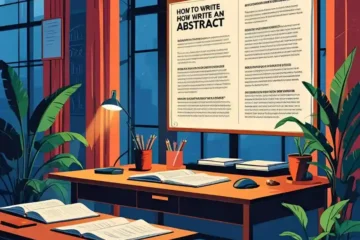Introduction
Writing is only one aspect of academic publishing; it’s a craft that requires accuracy, creativity, and a thorough awareness of the scholarly ecosystem. Publishing in a reputable journal can define a scholar’s career. However, many miss the cut due to preventable mistakes rather than because their study isn’t good enough. The truth is, even the most groundbreaking ideas can be overshadowed by common mistakes authors make during the submission process.
Journal editors reject considerably more manuscripts than they accept, and the rivalry is intense. Inadequate responses to reviewer comments or formatting mistakes are examples of minor mistakes that can have a significant impact. Moving from rejection to acceptance requires an understanding of and adherence to these difficulties.
Understanding Academic Publishing
What Makes Academic Publishing Different from Other Writing: Academic publication necessitates strict organization, scholarly language, and adherence to certain journal standards, in contrast to blog posts or generic articles. In addition to presenting facts, the writing must make a significant contribution to the corpus of current knowledge. Many authors here make the mistake of treating academic articles like informal reports.
The Stakes of Getting Published in Reputed Journals: Having an article published in a high-impact publication can lead to academic promotions, funding, and collaborations. Recurring rejections, on the other hand, can block careers and delay the impact of research.
Why Editors and Reviewers Are So Selective: The gatekeepers of academic legitimacy are editors. They anticipate excellent presentation, precise facts, and an unambiguous methodology. Without peer review, authors may be rejected for making even one of the usual faults, such as writing incoherently.
Mistake #1 – Poor Manuscript Preparation
Ignoring Journal Guidelines: All journals have rigorous submission requirements that include formatting, referencing style, and structure. One of the most frequent errors made by authors is to disregard these, which can result in the content being rejected outright before it has even been examined.
Formatting and Style Negligence: Carelessness is indicated by sloppy formatting, which includes erroneous citation style, inconsistent headings, and inaccurate font size. This immediately lowers the likelihood of approval.
Common Mistakes Authors Make in Presentation: Reviewers and editors may become frustrated if your study is difficult to understand due to cluttered tables, ambiguous figures, or missing captions.
Mistake #2 – Weak Research Design and Methodology
Lack of Clear Research Question: There must be a specific question in a research paper. In academic publishing, one of the most important mistakes authors make is to submit without a clear goal in mind.
Insufficient Data or Sampling Issues: A small, skewed, or unrepresentative sample weakens research credibility. Inadequate sampling techniques indicate a lack of scientific foundation.
How Poor Methodology Weakens Credibility: Even with excellent writing, a poor approach cannot yield reliable findings. To preserve the integrity of the journal, editors reject such studies.
Mistake #3 – Inadequate Literature Review
Missing Key References: Citing unrelated sources or leaving out important studies demonstrates a lack of knowledge about the area, which many authors commonly make.
Overreliance on Outdated Sources: Your study appears out of step with recent advancements if you simply use outdated sources.
Not Linking Literature to Research Gap: A strong literature review identifies the research gap rather than merely summarizing the material. One of the most harmful common errors made by authors is to overlook this link.
Mistake #4 – Plagiarism and Ethical Issues
Direct Copying Without Citation: In addition to being immoral, this will cause editors to reject the submission. To identify this, journals employ plagiarism detection technologies.
Self-Plagiarism Concerns: One of the frequent errors made by authors that might ruin their careers is reusing their own published work without giving due credit.
Ethical Approval and Research Integrity: Journals may reject a submission right away if researchers fail to obtain institutional ethical approval for studies involving humans or animals.
Mistake #5 – Weak Communication with Editors and Reviewers
Submitting Without a Proper Cover Letter: An effective cover letter might assist editors in appreciating the importance of your work. One of the subtle but frequent errors made by authors is to skip it.
Defensive or Aggressive Responses to Feedback: Reviewers offer feedback to help you improve your work. Rejection is frequently the result of defensive responses.
Common Mistakes Authors Make in Revision Stages: Disregarding or failing to respond to all reviewer concerns demonstrates a lack of professionalism.
How to Avoid These Mistakes
Checklists Before Submission: Create a pre-submission checklist covering formatting, citations, ethics approval, and originality checks to avoid common mistakes authors make.
Using Tools and Peer Review: Grammar checkers, plagiarism scanners, and peer feedback sessions can catch problems before submission.
Continuous Learning as an Academic Author: Attend workshops, follow leading researchers, and read journal editor blogs to stay updated on best practices.
Which Mistakes Matter More?
While all errors can cause rejection, some—such as poor methodology or plagiarism—are fatal and remain unfixable after submission. Authors can correct formatting or minor style issues during revisions, but these mistakes still damage first impressions. The most serious common mistakes authors make are those that compromise research integrity.
Conclusion
Avoiding the top five mistakes—poor manuscript preparation, weak methodology, inadequate literature review, plagiarism, and poor communication—can drastically improve your publication success. Academic publishing is a skill, and like any skill, it improves with practice and attention to detail.



0 Comments